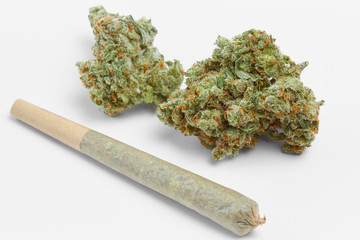Weed, often used as a colloquial term for marijuana or cannabis, is a plant that contains compounds known as cannabinoids, the most famous being THC (tetrahydrocannabinol) and CBD (cannabidiol). These compounds interact with the body’s endocannabinoid system, which plays a crucial role in regulating various physiological processes. While THC is responsible for marijuana’s psychoactive effects, CBD is non-psychoactive and has been praised for its potential medicinal benefits. Weed is used both recreationally and medically, with its popularity and acceptance growing worldwide.
The Different Types of Weed and Their Effects
There are three main types of cannabis plants: Cannabis sativa, Cannabis indica, and Cannabis ruderalis. Sativa strains are known for their uplifting and energizing effects, often used during the day for focus and creativity. Indica strains are more relaxing and sedative, commonly used for nighttime use or to help with anxiety and pain relief. Hybrid strains combine elements of both sativa and indica, offering a balanced effect. Each strain has a unique profile of cannabinoids and terpenes, which contribute to its distinct effects, flavor, and aroma.
The Medicinal Benefits of Weed
Weed has been used for centuries for medicinal purposes, and research into its health benefits is growing. Cannabinoids, particularly CBD, are believed to help alleviate symptoms of various medical conditions, including chronic pain, epilepsy, anxiety, and insomnia. For patients undergoing chemotherapy, cannabis can help reduce nausea and increase appetite. It has also shown promise in the treatment of neurodegenerative diseases like Alzheimer’s and Parkinson’s. While more studies are needed, cannabis is becoming increasingly recognized as an effective, natural alternative for managing certain health conditions.
The Legalization of Weed: A Global Perspective
The legalization of weed has been a topic of debate for decades. Over recent years, several countries and U.S. states have moved toward legalizing cannabis for medical and recreational use. Proponents argue that legalization can reduce crime, generate tax revenue, and allow for better regulation of the substance. Critics, however, cite concerns about potential increases in addiction, impaired driving, and health issues. Despite these concerns, many regions have seen positive outcomes from legalization, such as decreased criminal justice involvement and increased access to marijuana’s medicinal benefits.
The Risks and Side Effects of Weed
While weed can offer various benefits, it also comes with potential risks and side effects, especially when used excessively. Short-term effects can include impaired memory, coordination, and concentration, which can affect daily functioning. Long-term use, particularly in adolescents or heavy users, has been linked to an increased risk of mental health issues, such as anxiety, depression, and psychosis. Smoking weed can also cause respiratory issues, including bronchitis and lung irritation. It’s important for users to be mindful of these risks and to use cannabis responsibly, especially in areas with legal regulations.
Conclusion
As cannabis becomes more accepted and legalized, research into its potential continues to expand. Scientists are exploring new ways to harness the therapeutic properties of cannabinoids, including the development of CBD-based products for a wide range of conditions, from skincare to mental health. Cannabis is also being studied for its potential use in treating addiction, providing a safer alternative to substances like alcohol and opioids. With continued innovation and research, the future of weed holds great promise in both the medicinal and recreational sectors, offering more refined and safer options for consumers.
